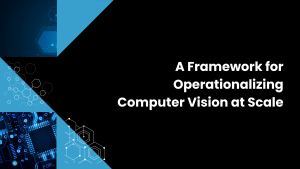A significant challenge to the adoption of desktop virtualization is that when compared to deploying a traditional desktop, the solution is complex and the ecosystem is fragmented (see Wikibon’s The Journey of Desktops From Virtualization to Any Device Anywhere). Virtualization has been driving IT groups to move from creating environments where infrastructure is architected specifically for each application to more generic building blocks that can support a number of workloads. VDI solutions are especially difficult to architect; a number of services are available in the marketplace (such as from Liquidware Labs and eG Innovations) to help understand the performance requirements prior to building the infrastructure. To date, desktop virtualization has failed to become the next big wave of virtualization infrastructure deployment.
Converged Infrastructure (see Wikibon Primer on Converged Infrastructure) is designed to improve the speed and agility of deploying infrastructure for virtual environments. Since performance can vary greatly for various workloads, specific applications need to be tested and benchmarked to help customers deploy these solutions with predictable results. While converged solutions are most often used to support a number of applications, according to data from some of the leading vendors in the space, it appears that VDI is becoming a killer application of converged infrastructure. As seen in the graphic below, not only are 30% of Cisco/NetApp FlexPod solutions used solely for VDI, but an additional 40% are in mixed environments, most of which have some VDI. VCE sources list Vblock deployments at 65% mixed workload and 25% VDI. Startup Nutanix also lists VDI deployments at about ¼ of overall sales.
In addition to simplifying the creation of the stack, converged solutions also promise to streamline management. When moving from a traditional desktop environment to VDI, a significant question is what group owns the infrastructure. Converged infrastructure solutions put the management of VDI infrastructure in the virtualization administrator’s domain.
While convergence promises to simplify and accelerate the adoption of VDI, it does not necessarily mean that we will see adoption rates go exponential (virtual desktop adoption is still in the single digits of overall desktop revenue). In addition to options to simplify internal deployments, Desktop-as-a-Service (DaaS) solutions have promised to increase overall adoption of new models of desktop deployment. While many services are available from service providers using a variety of platforms, overall adoption of DaaS has not been high. According to a blog post previewing some VMworld sessions, it may be too soon to call DaaS dead.
Action Item: CIOs that are considering converged infrastructure or desktop virtualization should consider putting the application on a converged stack. A stack of storage, compute, and networking provides a solid platform for piloting a VDI deployment that can grow into full production.
Footnotes: Recent interviews on this topic:
Ben Tao of Dell on vStart at Dell Storage Forum Boston 2012
Rick White of Fusion-io at HP Discover 2012
Laura Mattingly of LG&E discussed VDI and Vblocks at EMC World 2012



